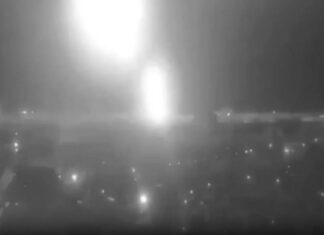US Air Force tests new datalinks, integrated command and control to demonstrate precision, strike of time critical targets at JFEX 08
The recent Joint Expeditionary Force Experiment 2008 (JEFX 08) wargame conducted by the US Air Forces’ Global Cyberspace Integration Center conducted last month (April 15-25) provided an opportunity to demonstrate and evaluate the collaborative effort of 15 new communications, information warfare initiatives from all military services. JEFX 08-3 was held simultaneously at the Nellis Air Force Base, Nevada and in 10 additional locations across the continental USA and demonstrated hoe the new technologies could empower existing ‘shooters’ and smart weapons engaging high value, time critical targets. According to Col. Stephen Moulton, GCIC Modernization and Innovation Director, “The exercise involved over 150 flights by 33 aircraft, contributing to the assessment of operational utility and technical performance of IP-based airborne networking and the experiment initiatives. Col Moulton presented the exercise to the audience of IDGA 5th Annual ‘Sensor to Shooter” meeting, held last April in Washington DC. The event was sponsored by Defense-Update.
Multi-Service Interoperability and Support
The experiment demonstrated joint operations that included engagement of targets through a synchronized mutually supported effort by Air Force, Army and Navy units utilizing the latest ISR and communications technologies.
Army units at Ft. Monmouth provided ground support and simulated the ‘user end’ of the integrated strike process. In one of the scenarios, first indications of a threat were provided by unattended ground sensors (UGS) and subsequently verified by unmanned aerial vehicle (UAV), both elements of the Army Future Combat Systems (FCS) program. After being evaluated at the FCS unit command post, a request for air support was routed to the Combat Air Operations Center (CAOC), which took over the management of the entire operation.
After a brief review at the CAOC, a request for intelligence was distributed to Army and Air Force services operating Non-Traditional ISR (NTISR) and strike aircraft in the target area. For the first time, those assets included a B-52 bomber and an Apache attack helicopter that could provide actionable intelligence in support of the attack. SIGINT was also engaged at this phase, utilizing integrated electronic surveillance assets controlled under the umbrella of Network Centric Collaborative Targeting (NCCT) and Suter V cyberwarfare assets. While Suter has been employed in past exercises, JEFX 08-3 provided the first opportunity to demonstrate the capability of the most advanced capabilities, operated under the umbrella of Suter V. As targeting request was sent via datalink to the NTISR, ‘shooters’ also received the targeting request and therefore could pursue it much faster, as soon as the relevant information from the NTISR became available.
Other topics covered in this series:
-
Multi-Service Interoperability and Support
- Who’s in Control?
- F-22 Enters the Network – Linking IFDL, TTNT, Link 16
- Navy Tests new Global Command Architecture



















